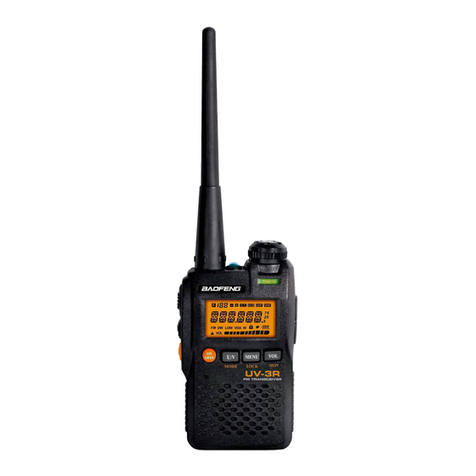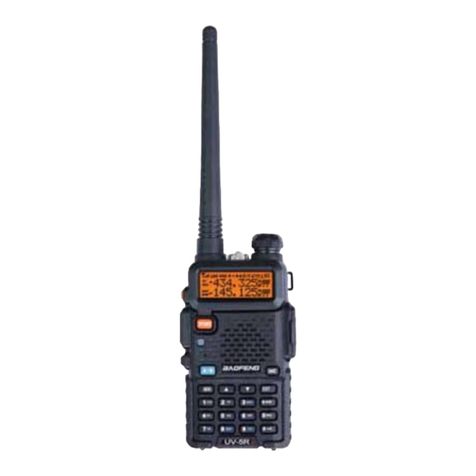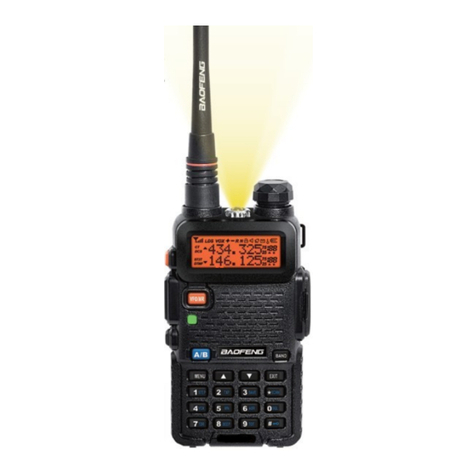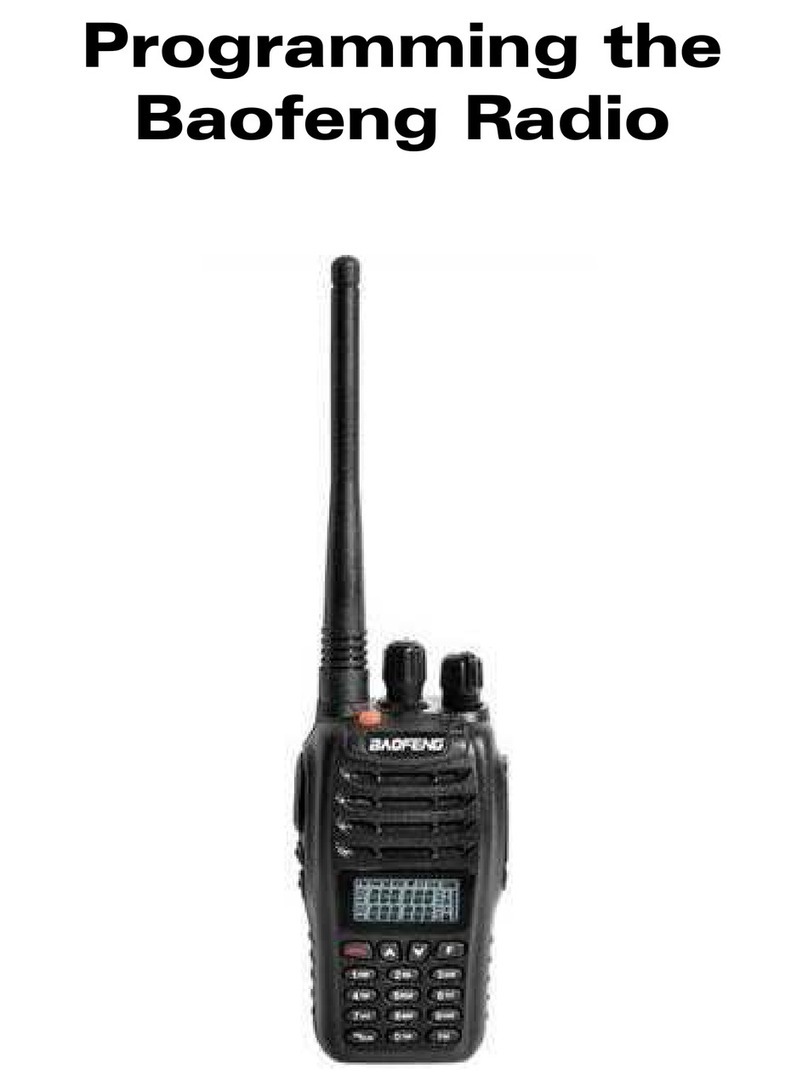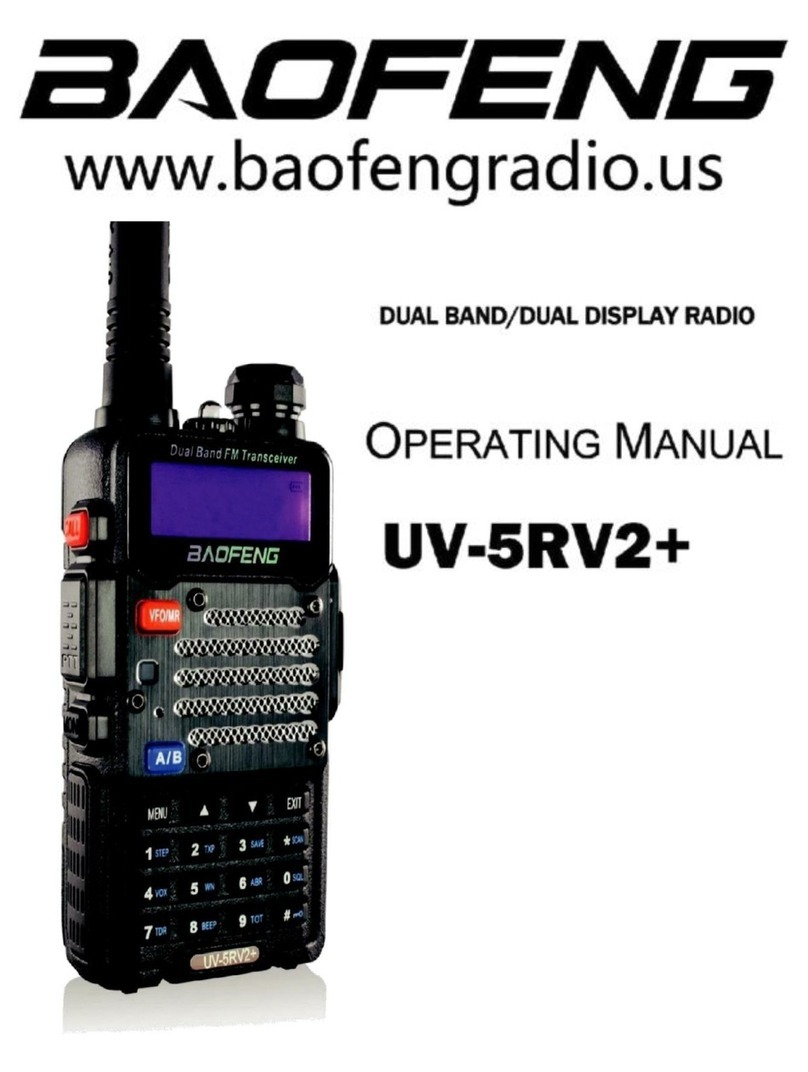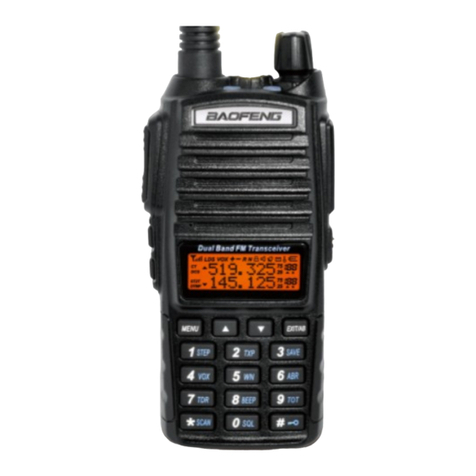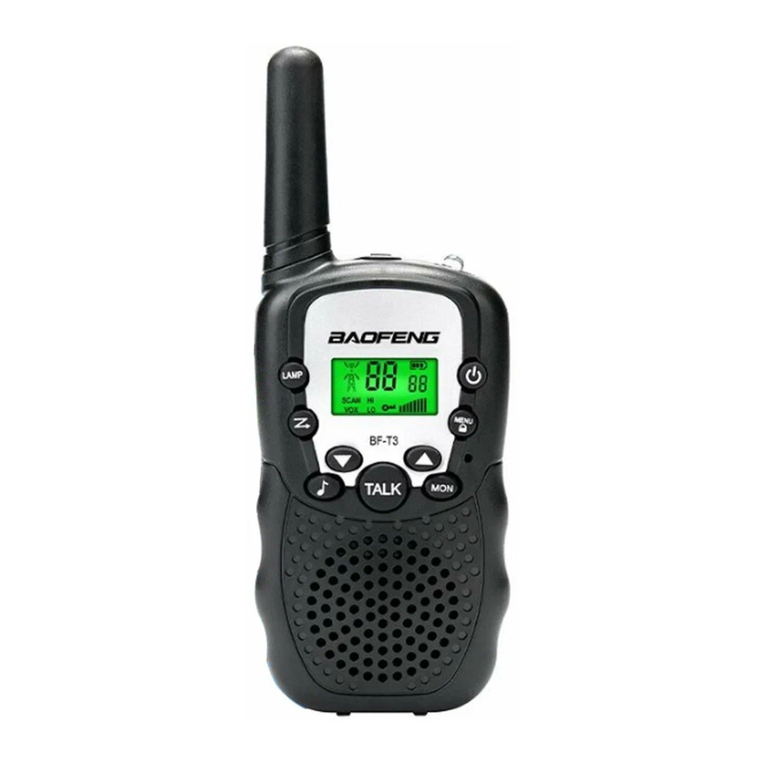8
J.-
COMMAND/KEY
DEFINTTION:
•
[PTTl(PUSH-TO-TALK):
Press and
hold
down
the
[PTT]
button
to transmit; release it to receive.
•
SK-SIDE
KEY1/|CALL):
- Press the [CALL] button.to activate the FM Radio;Press it again to deactivate the FM Radio.
- Press and bold on the [CALL|button,to activate the alarm function; Pressand hold it again,to
deactivate
the
alarm
function.
•
SK-SIDE
KEY2/[MONI):
-Press the [MONIJ button,to turn on the flashIight;Pressit again to turn off.Press and hold on the
[MONI] button,to monitorthe signal.
•IVFO/MRIBUTTON:
-Pressthe [VFO/MR] button,™ switch the frequency mode and channel mode,
•IA/B]BUTTON:
-Pressthe [A/B]button.to switch frequency display.
•[BAND1BUTTON:
-Pressthe [BAND]button,to switch band dispaly.
-While
FM radio being activated.press
the
[BANDJbutton to switch the band
of
FM radiofband 65-
75MHz/76-108MHz).
•t*SCAN]KEY:
•Pressthe (*SCAN) key to activate the Reverse function,it will exchangea separatereceptionand
transmission frequency.
-Pressthe [*SCAN] key for 2 seconds to start scanning(frequency/channel).
-While FM radio being activated.press the hvSCAN]key to search FM radio station.
-Whilesetting the
RX
CTCSS/DCS, press the key [*SCAN] to scan the
RX
CTCSS/DCS.
•l#n-»]
KEY:
-Under channel mode, press [#n-»] key to switch High/Low transmit power.
-Press I#p-»] key for 2 secondsto lock/unlock the keypad.
•FUNCTION
KEYPAD:
-|MENU]key:
-To enter the menu of the radio and confirm the setting.
-WWkey:
-Press and hold |A]or(*]key for frequency up or down fast.
-Press[A]or(A]key,the scanningwill be opposite.
-[EXITlkey:
•To
cancel
/clear
or
exit.
•NUMERIC
KEYPAD:
-Used to enter information for programming the radio's lists and the
non-standard
CTCSS
-Under transmission mode, press the numeric key to send the signal
code(tbe code should be set by PCsoftware).
09
